Kevin Jiang in Harvard Magazine:
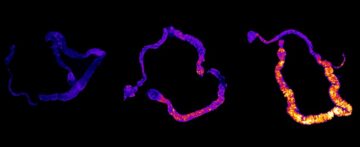 The first signs of insufficient sleep are universally familiar. There’s tiredness and fatigue, difficulty concentrating, perhaps irritability or even tired giggles. Far fewer people have experienced the effects of prolonged sleep deprivation, including disorientation, paranoia and hallucinations. Total, prolonged sleep deprivation, however, can be fatal. While it has been reported in humans only anecdotally, a study in rats conducted by Chicago-based researchers in 1989 showed that a complete lack of sleep inevitably leads to death. Yet, despite decades of study, a central question has remained unsolved: why do animals die when they don’t sleep?
The first signs of insufficient sleep are universally familiar. There’s tiredness and fatigue, difficulty concentrating, perhaps irritability or even tired giggles. Far fewer people have experienced the effects of prolonged sleep deprivation, including disorientation, paranoia and hallucinations. Total, prolonged sleep deprivation, however, can be fatal. While it has been reported in humans only anecdotally, a study in rats conducted by Chicago-based researchers in 1989 showed that a complete lack of sleep inevitably leads to death. Yet, despite decades of study, a central question has remained unsolved: why do animals die when they don’t sleep?
Now, Harvard Medical School neuroscientists have identified an unexpected, causal link between sleep deprivation and premature death. In a study on sleep-deprived fruit flies, published in Cell on June 4, researchers found that death is always preceded by the accumulation of molecules known as reactive oxygen species (ROS) in the gut. When fruit flies were given antioxidant compounds that neutralize and clear ROS from the gut, sleep-deprived flies remained active and had normal lifespans. Additional experiments in mice confirmed that ROS accumulate in the gut when sleep is insufficient.
The findings suggest the possibility that animals can indeed survive without sleep under certain circumstances. The results open new avenues of study to understand the full consequences of insufficient sleep and may someday inform the design of approaches to counteract its detrimental effects in humans, the authors said. “We took an unbiased approach and searched throughout the body for indicators of damage from sleep deprivation. We were surprised to find it was the gut that plays a key role in causing death,” said senior study author Dragana Rogulja, assistant professor of neurobiology in the Blavatnik Institute at HMS. “Even more surprising, we found that premature death could be prevented. Each morning, we would all gather around to look at the flies, with disbelief to be honest. What we saw is that every time we could neutralize ROS in the gut, we could rescue the flies,” Rogulja said.
More here.
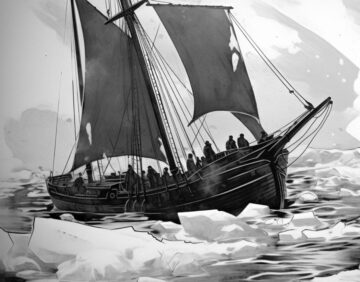 The message in a bottle washed ashore on a rocky beach at Coldingham Bay, Scotland, on the morning of March 11, 1909. For anxious relatives and friends, the hastily-scrawled note seemed to confirm their fears that the two-masted sailboat and its ten crew members were lost at sea.
The message in a bottle washed ashore on a rocky beach at Coldingham Bay, Scotland, on the morning of March 11, 1909. For anxious relatives and friends, the hastily-scrawled note seemed to confirm their fears that the two-masted sailboat and its ten crew members were lost at sea.
 Artificial intelligence (AI) systems,
Artificial intelligence (AI) systems,  In my view as
In my view as 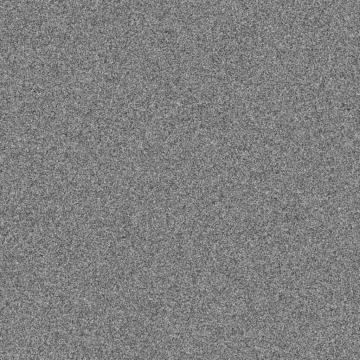 “Noise” is a fuzzy word—a noisy one, in the statistical sense. Its meanings run the gamut from the negative to the positive, from the overpowering to the mysterious, from anarchy to sublimity. The negative seems to lie at the root: etymologists trace the word to “nuisance” and “nausea.” Noise is what drives us mad; it sends the Grinch over the edge at Christmastime. (“Oh, the Noise! Noise! Noise! Noise!”) Noise is the sound of madness itself, the din within our minds. The demented narrator of Poe’s “The Tell-Tale Heart” jabbers about noise while he hallucinates his victim’s heartbeat: “I found that the noise was not within my ears. . . . The noise steadily increased. . . . The noise steadily increased.”
“Noise” is a fuzzy word—a noisy one, in the statistical sense. Its meanings run the gamut from the negative to the positive, from the overpowering to the mysterious, from anarchy to sublimity. The negative seems to lie at the root: etymologists trace the word to “nuisance” and “nausea.” Noise is what drives us mad; it sends the Grinch over the edge at Christmastime. (“Oh, the Noise! Noise! Noise! Noise!”) Noise is the sound of madness itself, the din within our minds. The demented narrator of Poe’s “The Tell-Tale Heart” jabbers about noise while he hallucinates his victim’s heartbeat: “I found that the noise was not within my ears. . . . The noise steadily increased. . . . The noise steadily increased.”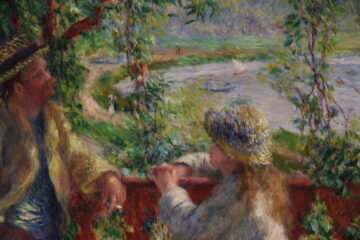 IF ITS POTENTIAL BEAUTY is one reason that my MAGA friend can appreciate Impressionism but not its avant-garde successors, another is the movement’s ambiguity between upholding and condemning the forms of authority that dominate modern society. On the one hand, we have the glassy stares of Morisot’s caregivers, the sickly pallor of Degas’s absinthe fiends, and the insectoid inhabitants of Pissarro’s anomic streetscapes––these seem to protest the quotidian cruelties of bourgeois existence, critiquing, respectively, patriarchal subjugation, social disintegration, and bureaucratic administration. On the other, we have Caillebotte’s weekend boaters, Cassatt’s loving families, and Renoir’s dancing couples––these seem to salute the little pleasures of modern life, affirming, respectively, suburban leisure, domestic femininity, and erotic gaiety. These oppositions occur not only between paintings, but even within individual works.
IF ITS POTENTIAL BEAUTY is one reason that my MAGA friend can appreciate Impressionism but not its avant-garde successors, another is the movement’s ambiguity between upholding and condemning the forms of authority that dominate modern society. On the one hand, we have the glassy stares of Morisot’s caregivers, the sickly pallor of Degas’s absinthe fiends, and the insectoid inhabitants of Pissarro’s anomic streetscapes––these seem to protest the quotidian cruelties of bourgeois existence, critiquing, respectively, patriarchal subjugation, social disintegration, and bureaucratic administration. On the other, we have Caillebotte’s weekend boaters, Cassatt’s loving families, and Renoir’s dancing couples––these seem to salute the little pleasures of modern life, affirming, respectively, suburban leisure, domestic femininity, and erotic gaiety. These oppositions occur not only between paintings, but even within individual works. Scholars often say that no one doubted Shakespeare’s authorship until the 19th century. The response is a rote way of brushing off persistent questions about the attribution of the world’s most famous plays and poems – but it may not be true. New scholarship suggests that doubts about Shakespeare’s authorship first arose during his lifetime – in a book called Palladis Tamia, Wits Treasury, published in 1598 by the theologian Francis Meres. Roger Stritmatter, a professor at Coppin State University who has spent years studying Meres’ book, argues that Meres asserted “Shakespeare” as the pseudonym of Edward de Vere, 17th Earl of Oxford. Stritmatter’s research has been published in the academic journal
Scholars often say that no one doubted Shakespeare’s authorship until the 19th century. The response is a rote way of brushing off persistent questions about the attribution of the world’s most famous plays and poems – but it may not be true. New scholarship suggests that doubts about Shakespeare’s authorship first arose during his lifetime – in a book called Palladis Tamia, Wits Treasury, published in 1598 by the theologian Francis Meres. Roger Stritmatter, a professor at Coppin State University who has spent years studying Meres’ book, argues that Meres asserted “Shakespeare” as the pseudonym of Edward de Vere, 17th Earl of Oxford. Stritmatter’s research has been published in the academic journal  No one wants to eat when they have an upset stomach. To pinpoint exactly where in the brain this distaste for eating originates, scientists studied nauseated mice. The work, published in Cell Reports on 27 March
No one wants to eat when they have an upset stomach. To pinpoint exactly where in the brain this distaste for eating originates, scientists studied nauseated mice. The work, published in Cell Reports on 27 March E
E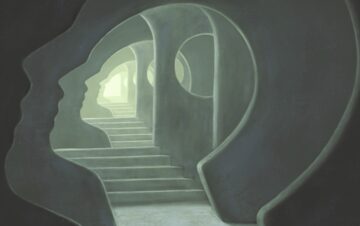 The attempts I made to get out of my own head were sundry and full of nonsense.
The attempts I made to get out of my own head were sundry and full of nonsense. Record rainfall hit the Arabian peninsula this week, causing flooding in Dubai and Abu Dhabi, as well as other coastal cities in the United Arab Emirates. The extreme weather prompted speculation on social media about whether the UAE’s longstanding cloud-seeding programme played a role. But cloud seeding almost certainly didn’t have any significant hand in the flooding.
Record rainfall hit the Arabian peninsula this week, causing flooding in Dubai and Abu Dhabi, as well as other coastal cities in the United Arab Emirates. The extreme weather prompted speculation on social media about whether the UAE’s longstanding cloud-seeding programme played a role. But cloud seeding almost certainly didn’t have any significant hand in the flooding. To be sure, AI models are evolving rapidly. When EU regulators released the first draft of the AI Act in April 2021, they
To be sure, AI models are evolving rapidly. When EU regulators released the first draft of the AI Act in April 2021, they  The first signs of insufficient sleep are universally familiar. There’s tiredness and fatigue, difficulty concentrating, perhaps irritability or even tired giggles. Far fewer people have experienced the effects of prolonged sleep deprivation, including disorientation, paranoia and hallucinations. Total, prolonged sleep deprivation, however, can be fatal. While it has been reported in humans only anecdotally, a
The first signs of insufficient sleep are universally familiar. There’s tiredness and fatigue, difficulty concentrating, perhaps irritability or even tired giggles. Far fewer people have experienced the effects of prolonged sleep deprivation, including disorientation, paranoia and hallucinations. Total, prolonged sleep deprivation, however, can be fatal. While it has been reported in humans only anecdotally, a 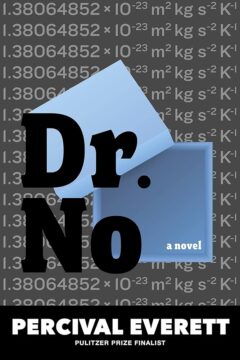 Toward the end of Percival Everett’s 2021 novel
Toward the end of Percival Everett’s 2021 novel  Angie calls in a high state of excitement: they’re going to see Elvis at Madison Square Garden in New York City. “Come over, David must look wonderful!” I want to go with them…there’s no chance of that happening, but still, a girl can dream. As I drive to Haddon Hall, I can’t help but think over and over…they’re going to see ELVIS!
Angie calls in a high state of excitement: they’re going to see Elvis at Madison Square Garden in New York City. “Come over, David must look wonderful!” I want to go with them…there’s no chance of that happening, but still, a girl can dream. As I drive to Haddon Hall, I can’t help but think over and over…they’re going to see ELVIS!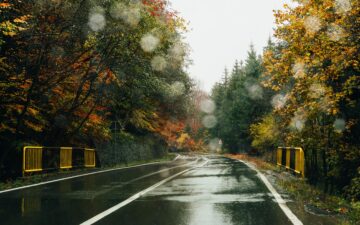 What is the distance between the scent of a rose and the odour of camphor? Are floral smells perpendicular to smoky ones? Is the geometry of ‘odour space’ Euclidean, following the rules about lines, shapes and angles that decorate countless high-school chalkboards? To many, these will seem like either unserious questions or, less charitably, meaningless ones. Geometry is logic made visible, after all; the business of drawing unassailable conclusions from clearly stated axioms. And odour is, let’s be honest, a bit too vague and vaporous for any of that. The folksy idea of smell as the blunted and structureless sense is at least as old as Plato, and I have to confess that, even as an olfactory researcher, I sometimes feel like I’m studying the Pluto of the sensory systems – a shadowy, out-there iceball on a weird orbit.
What is the distance between the scent of a rose and the odour of camphor? Are floral smells perpendicular to smoky ones? Is the geometry of ‘odour space’ Euclidean, following the rules about lines, shapes and angles that decorate countless high-school chalkboards? To many, these will seem like either unserious questions or, less charitably, meaningless ones. Geometry is logic made visible, after all; the business of drawing unassailable conclusions from clearly stated axioms. And odour is, let’s be honest, a bit too vague and vaporous for any of that. The folksy idea of smell as the blunted and structureless sense is at least as old as Plato, and I have to confess that, even as an olfactory researcher, I sometimes feel like I’m studying the Pluto of the sensory systems – a shadowy, out-there iceball on a weird orbit.